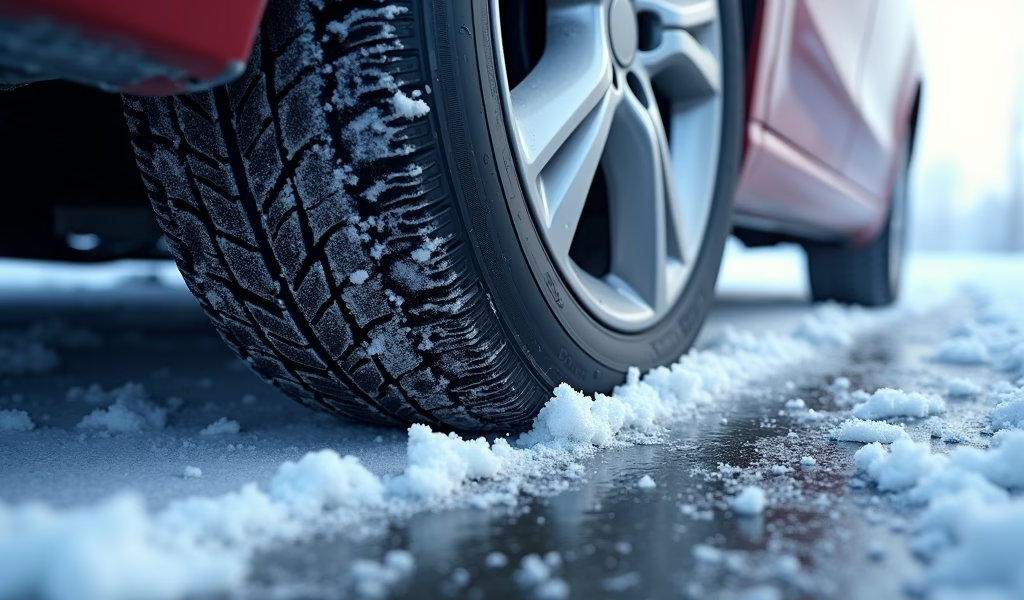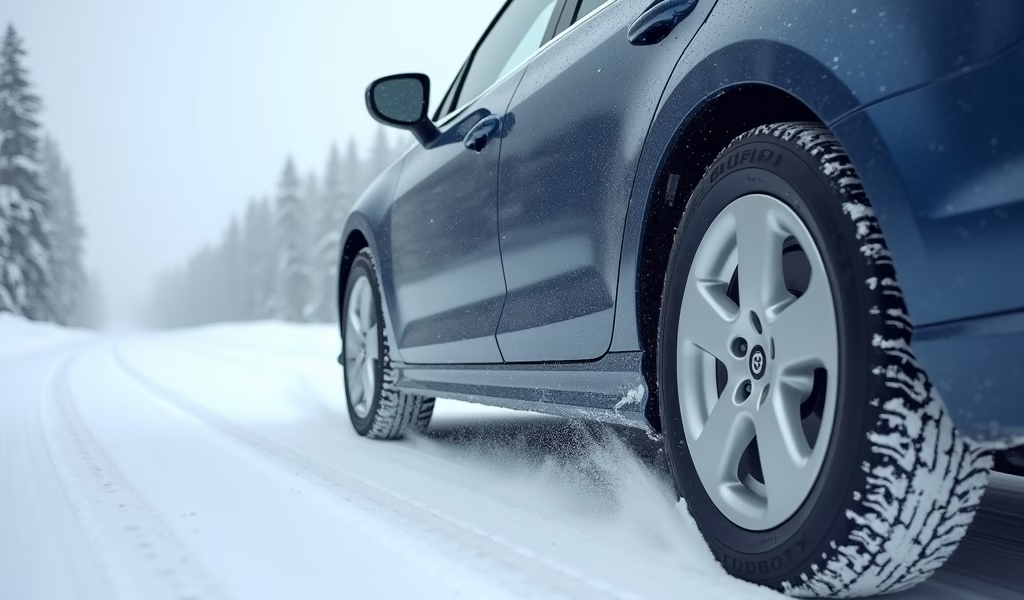Overview
This article provides five essential care tips for winter tires: proper off-season storage, regular pressure checks, following a rotation schedule, cleaning and inspection, and adopting appropriate driving habits. These maintenance practices help maximize the performance, safety, and longevity of winter tires, which typically last 3-4 seasons and should be installed when temperatures consistently drop below 45°F.
Table of Contents
- Understanding Winter Tires
- Essential Care Tip #1: Proper Storage During Off-Season
- Essential Care Tip #2: Regular Pressure Checks
- Essential Care Tip #3: Rotation Schedule
- Essential Care Tip #4: Cleaning and Inspection
- Essential Care Tip #5: Proper Driving Habits
- Conclusion
- Frequently Asked Questions
When temperatures drop and snowflakes start falling, your vehicle’s connection to the road becomes more important than ever. The best winter tires aren’t just an optional upgrade—they’re your first line of defense against slippery, dangerous winter conditions. As someone who’s spent 20 years under the hood and behind the wheel in some of the harshest winter climates, I’ve seen firsthand how proper tire care can be the difference between a safe journey home and a roadside emergency.
Winter tires represent a significant investment in your safety, but without proper maintenance, even the most premium options won’t deliver the performance you’re paying for. Let’s dive into the essential care tips that’ll keep your winter rubber in peak condition when you need it most.
Understanding Winter Tires
Winter tires (sometimes called snow tires) differ fundamentally from all-seasons in three critical ways. First, they use specialized rubber compounds that remain flexible in freezing temperatures. When the mercury drops below 45°F (7°C), standard tires begin to harden, losing grip. Winter tires, meanwhile, stay pliable—think of the difference between a hard plastic hockey puck and a gummy bear.
Second, winter tires feature aggressive tread patterns with deeper grooves that bite into snow and channel slush away from the contact patch. Look closely and you’ll notice thousands of tiny slits called “sipes” that create biting edges for improved traction on ice. These design elements work together to prevent the tire from riding on top of snow and losing contact with the road.
Finally, premium winter tires often incorporate innovative technologies like multi-cell compounds that draw water away from ice, creating a suction-cup effect that dramatically improves grip in the most challenging conditions. According to tire testing experts at TireRack, a quality winter tire can improve stopping distance on ice by up to 30% compared to all-seasons—the difference between a close call and a collision.
For optimal performance, install your winter tires when temperatures consistently stay below 45°F, typically before the first snowfall. This timing ensures you’re prepared before that surprise early storm catches you off guard.

Essential Care Tip #1: Proper Storage During Off-Season
Your winter tires spend half the year waiting for their moment to shine. How you store them dramatically affects both their longevity and performance when winter returns. Think of rubber as a living material—it reacts to its environment and needs the right conditions to maintain its properties.
First, find a cool, dry space away from direct sunlight, ozone-producing equipment (like furnaces or electric motors), and heat sources. UV rays and heat accelerate rubber aging and breakdown. Your basement or climate-controlled garage is perfect; an attic or outdoor shed with temperature swings is not.
Before storage, give those tires a proper bath. Road salt and grime aren’t just unsightly—they’re corrosive enemies that slowly degrade rubber compounds. A gentle wash with mild soap and thorough drying prevents these contaminants from doing their damage during the off-season.
How you position tires matters too:
- For unmounted tires: Stack them no more than four high, or stand them upright and rotate them monthly to prevent flat-spotting.
- For mounted tires: Either stack them or hang them by the rim (never the rubber).
- Consider using breathable tire bags or covers to prevent dust accumulation while allowing moisture to escape.
Finally, tag your tires to track their position on the vehicle. A simple “RF” (right front) or “LR” (left rear) with masking tape ensures proper rotation patterns when winter returns. Your future self will thank you for this five-second step.
Essential Care Tip #2: Regular Pressure Checks
If there’s one winter tire tip worth obsessing over, it’s pressure monitoring. Like a balloon left outside on a cold day, tire pressure drops significantly as temperatures fall—typically 1-2 PSI for every 10-degree Fahrenheit drop. A tire properly inflated at 70°F might be dangerously underinflated when the thermometer hits 20°F.
Underinflated winter tires create three major problems: excessive flexing that generates heat and accelerates wear, reduced fuel economy (up to 3%), and compromised handling precisely when you need control most. Overinflation isn’t better—it reduces the tire’s contact patch and grip on snow and ice.
I recommend checking pressure at least twice monthly throughout winter—ideally in the morning before driving when tires are cold. The correct pressure isn’t found on the tire sidewall but in your vehicle’s doorjamb, owner’s manual, or fuel door. That number on the tire? That’s the maximum pressure, not the recommended one!
For accurate readings in cold weather, invest in a quality digital gauge rather than relying on the notoriously inaccurate pencil gauges at gas stations. For about $15, you’ll get readings within 0.5 PSI—precision that matters when navigating winter’s challenges.
Remember too that modern Tire Pressure Monitoring Systems (TPMS) typically warn only when pressure drops 25% below recommendations. By that point, your winter tires are already compromised. Manual checks remain essential even in newer vehicles, as NHTSA studies have shown.
Essential Care Tip #3: Rotation Schedule
Even the most perfectly balanced winter tires wear unevenly over time. Your vehicle’s weight distribution, suspension geometry, and driving habits all contribute to different wear patterns across all four corners. Rotation—systematically moving tires from one position to another—ensures even tread wear, extending the life of your winter set by up to 20%.
For most vehicles, rotating winter tires every 5,000-7,000 miles strikes the right balance. However, if you notice uneven wear developing or drive primarily in harsh conditions, consider a mid-winter rotation regardless of mileage.
The rotation pattern depends on your drive configuration:
- Front-wheel drive: Move front tires to the rear in their same left/right positions; cross rear tires to opposite sides at front.
- Rear-wheel drive: Move rear tires directly forward; cross front tires to opposite sides at rear.
- All-wheel drive: Cross all tires to opposite corners (left front moves to right rear, etc.).
While rotation is possible as a DIY project with the right equipment, professional service ensures proper torquing of lug nuts—an often-overlooked safety factor. Over-tightened lugs can stretch studs and warp rotors; under-tightened ones can work loose. The modest cost of professional rotation typically includes a valuable inspection that might catch issues before they become expensive problems.
Remember: directional winter tires (with arrows on the sidewall) can only be rotated front-to-back on the same side unless dismounted and remounted. Consult your tire’s documentation or ask your tire professional if you’re unsure of your specific rotation needs.
Essential Care Tip #4: Cleaning and Inspection
Winter roads are hostile environments. The cocktail of road salt, sand, and chemical de-icers that keeps roads passable also slowly destroys your tires through constant chemical assault. These corrosive materials can penetrate small cuts in the rubber, accelerating degradation from the inside out.
Make it a habit to wash your winter tires regularly—at least monthly and after any major storm event where roads have been heavily treated. Pay special attention to the wheels and inner sidewalls where salt accumulation is highest. A thorough rinse of wheel wells removes hidden salt deposits that can damage not just tires but suspension components.
After cleaning comes inspection—your opportunity to catch small issues before they become major problems. Run your hand carefully over each tire’s tread, feeling for:
- Cuts or gouges in the tread blocks
- Bulges or bubbles in the sidewall (indicating potential internal damage)
- Objects embedded in the tread
- Uneven wear patterns that might indicate alignment issues
Check tread depth using the simple “quarter test”—insert a quarter into your tire’s tread groove with Washington’s head upside down. If you can see the top of his head, your tread depth is below 4/32″, indicating it’s time to consider replacement. For winter driving in serious snow regions, 6/32” is the minimum I recommend to my customers.
Winter tires typically last 3-4 seasons for the average driver, but harsh conditions or aggressive driving can shorten this lifespan. Keeping detailed notes about installation dates and mileage helps track wear patterns and plan for eventual replacement before you’re caught with inadequate tread during winter’s worst.

Essential Care Tip #5: Proper Driving Habits
Even the best winter tires can’t overcome poor driving habits. How you drive plays an enormous role in both tire longevity and performance. A few simple adjustments to your winter driving style can dramatically extend the life of your winter rubber while improving safety.
Start with acceleration. Gentle, progressive throttle application prevents the wheelspin that not only wears tires rapidly but also reduces control. In technical terms, you’re preventing the tire from exceeding its coefficient of friction with the road surface—in practical terms, you’re being smooth rather than jerky with the gas pedal.
Braking deserves similar finesse. Plan stops well in advance, allowing for gentle deceleration rather than panic stops. This “anticipatory driving” style not only preserves your tires but prevents many winter accidents. Leave extra space between vehicles—I recommend doubling your normal following distance when roads are slick.
Cornering technique matters too. Enter turns at reduced speed, and avoid accelerating until you’re straightening the wheel. This prevents the lateral forces that can overcome winter tires’ grip, especially on ice. Think of it as “slow in, slow out” rather than the “slow in, fast out” approach you might use in dry conditions.
Finally, be vigilant about avoiding road hazards. Winter potholes—those crater-like openings that appear after freeze-thaw cycles—deliver brutal impacts that can create internal tire damage invisible to the naked eye. Even small impacts can break tire belts or create sidewall bulges that compromise safety. Studded tire users should be particularly careful, as impacts can dislodge studs and create imbalance issues.
Remember: winter tires provide superior grip, but they don’t repeal the laws of physics. Adjust your speed according to conditions, not just posted limits. The best winter tires in the world can’t save you from excessive speed on glare ice!
Conclusion
Your winter tires represent both a significant investment in your safety and your freedom to move confidently through winter’s challenging conditions. By following these five essential care practices—proper storage, regular pressure checks, consistent rotation, thorough cleaning and inspection, and adopting tire-friendly driving habits—you’ll maximize both their performance and longevity.
The difference between well-maintained winter tires and neglected ones isn’t just about dollars saved, though extending life from three seasons to five certainly helps your wallet. It’s about ensuring they perform at their peak when you need them most—like during that unexpected snowstorm or when navigating an icy hill on your morning commute.
Winter driving doesn’t need to be stressful. With quality winter tires that receive proper care, you can approach the season with confidence rather than anxiety. The peace of mind that comes from knowing you’ve done everything possible to prepare your vehicle is perhaps the greatest benefit of all.
Remember: your tires are quite literally where the rubber meets the road. No other vehicle component has a greater impact on your winter driving safety. Give them the attention they deserve, and they’ll carry you through winter’s worst with confidence and control.
Frequently Asked Questions
When should I install my winter tires?
Install winter tires when temperatures consistently drop below 45°F (7°C), typically before the first snowfall. This ensures optimal performance since all-season tires harden and lose effectiveness below this temperature threshold.
How long do winter tires typically last?
Quality winter tires typically last 3-4 seasons for average drivers who put on 5,000-8,000 miles per winter. Aggressive driving, improper storage, or failing to rotate them can significantly reduce this lifespan.
Can I use winter tires year-round?
No, winter tires should not be used year-round as their softer rubber compounds wear extremely quickly in warm weather. They also provide less responsive handling and poorer fuel economy in summer conditions than all-season or summer tires.
Do I need four winter tires or can I just use two?
Always install a complete set of four matching winter tires. Installing only two creates dangerous handling imbalances where one axle has significantly more grip than the other, potentially causing spinouts or loss of control.
Are studded winter tires better than studless ones?
Studded tires provide superior traction specifically on ice but are noisier, damage road surfaces, and offer less grip on dry or wet pavement. Modern studless winter tires provide excellent ice performance without these drawbacks and are legal in all regions.


Pingback: Best Snow Tires: 7 Proven Picks for Grip - knowsyourcar.com